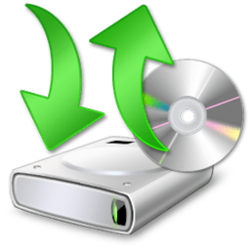Hello,
im getting a new 2TB SSD and want to restore my current OS to this new disk while changing the size. The old 1TB SSD will be removed from the computer when everything is done.
Just installed Macrium Reflect Free to make an image of the current state hope this is sufficient. Disk 4 (1TB) is the OS
I would like my new Disks partitions to look something like this (ESP / MSR / ~500GB OS / 1,5TB free / recovery? )
Im not sure how i can achieve this and dont want to destroy any boot related things so i hope someone can help me here.
Also if there are better ways of structuring the Data im open to suggerstions i just find 2TB for the OS hard to manage / backup in the future and feel like i have to do something.
Also while im at it Disk 2 has some unused Space i guess this is some old Recovery partition somehow before everything else. Is there a way i can merge it with the data?

im getting a new 2TB SSD and want to restore my current OS to this new disk while changing the size. The old 1TB SSD will be removed from the computer when everything is done.
Just installed Macrium Reflect Free to make an image of the current state hope this is sufficient. Disk 4 (1TB) is the OS
I would like my new Disks partitions to look something like this (ESP / MSR / ~500GB OS / 1,5TB free / recovery? )
Im not sure how i can achieve this and dont want to destroy any boot related things so i hope someone can help me here.
Also if there are better ways of structuring the Data im open to suggerstions i just find 2TB for the OS hard to manage / backup in the future and feel like i have to do something.
Also while im at it Disk 2 has some unused Space i guess this is some old Recovery partition somehow before everything else. Is there a way i can merge it with the data?

- Windows Build/Version
- 22H2 Build 22621.2283
My Computer
System One
-
- OS
- Windows 11
- Computer type
- PC/Desktop
- CPU
- AMD Ryzen 7 5800X3D
- Motherboard
- ASUS ROG STRIX X470-F GAMING
- Memory
- F4-3200C14-16GFX
- Graphics Card(s)
- MSI GeForce GTX 1070
- Monitor(s) Displays
- MAG274QRF-QD1 and FS2333









